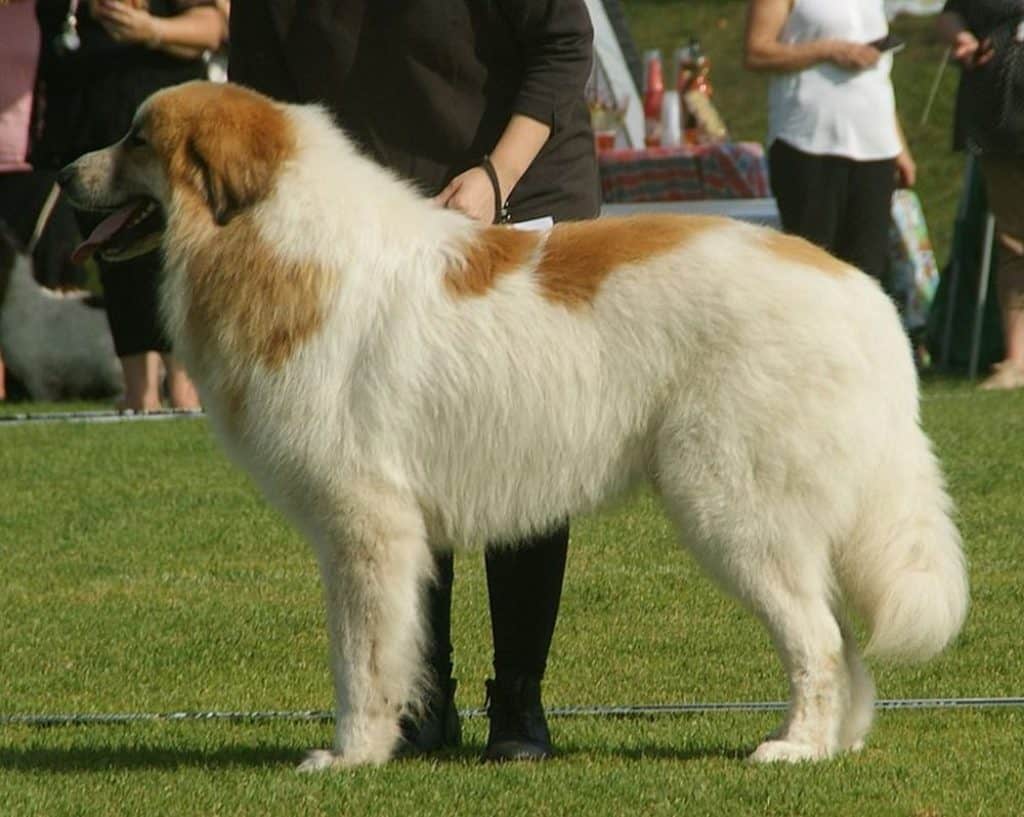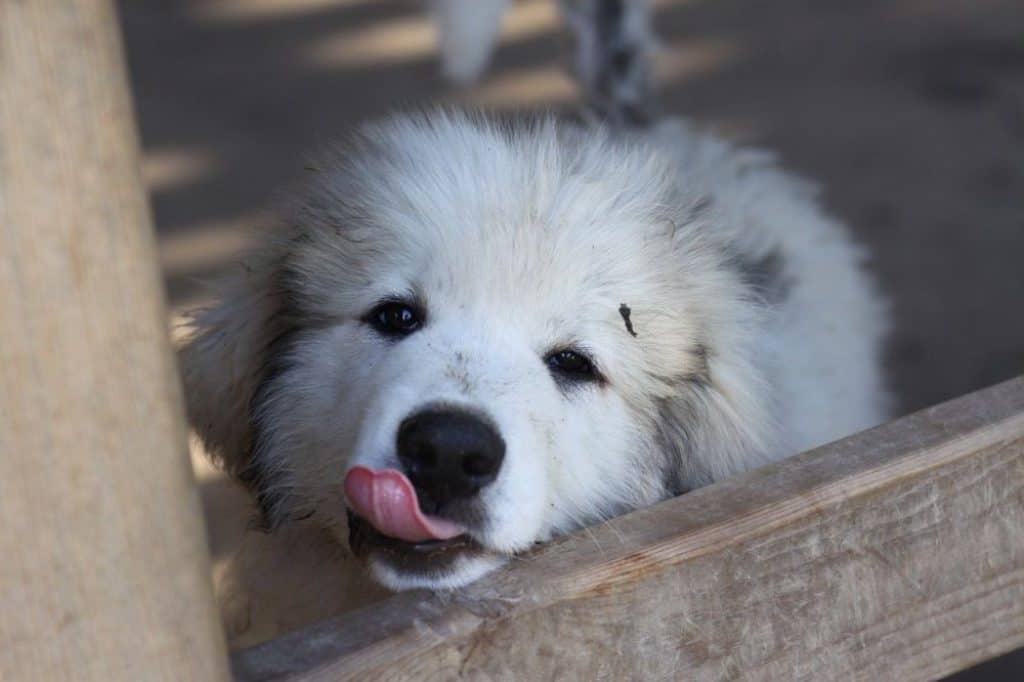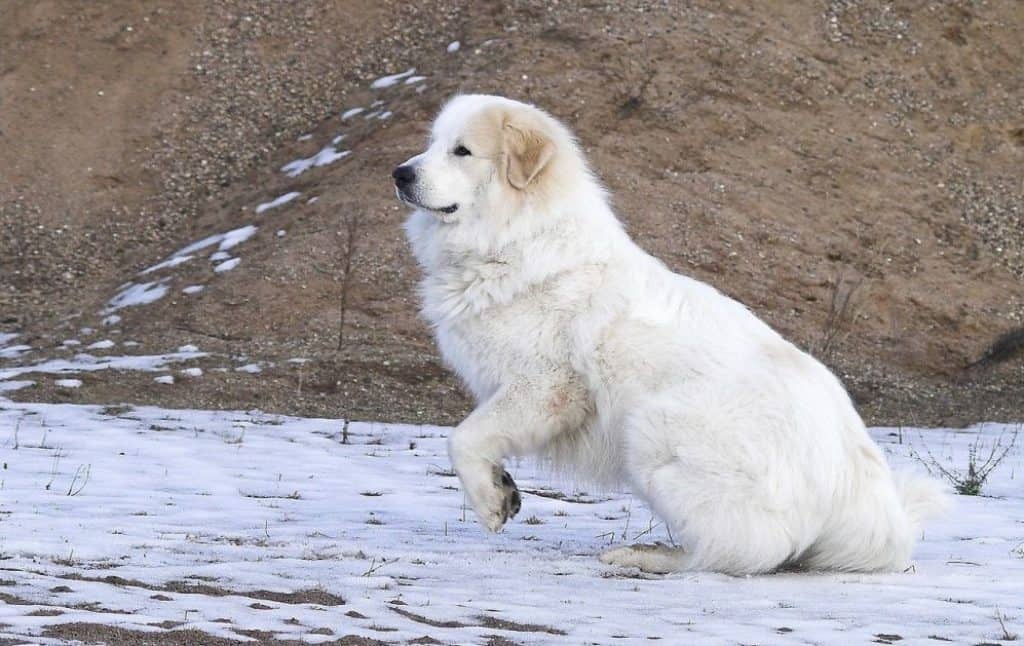There’s definitely something special about all-white dogs.
Unlike most of their dark-colored canine counterparts, they always carry themselves with a certain elegance and in a graceful manner.
We can easily consider them the aristocracy of the dog world.
In addition, those breeds with arctic or mountain origins usually combine that dignified outlook with an imposing size and are a true joy to behold.
One of those magnificent and classy white-coat breeds is certainly the Great Pyrenees.
Their lush white fur is the first thing that catches the eye, but their commanding stature and huge size also add some ruggedness to their appearance as if they’re telling us they’re not to be messed with.
But, potential owners, when doing their research on the breed, may find some information on color patterns other than solid white.
So, are all Great Pyrenees white?
To clear some of the confusion, keep reading!
[wpsm_toplist]
Are All Great Pyrenees White?

While most people imagine Great Pyrenees as all-white giants, that may not always be the case.
Even though they are principally always white, some dogs may have markings of other colors.
The breed standard prescribes that these patches can’t cover more than one-third of the Great Pyrenees’ bodies, but it still means that they can have a significant level of coloration.
These markings can be different shades of tan, gray, orange, badger, or reddish-brown.
The dominance of the white in the Great Pyrenees’ coloration is no accident.
The breed is very old and throughout their history, Pyrenees were commonly used for herding livestock, mostly sheep.
For this reason, favored dogs born with predominantly white fur were always favored by the breeders.
The bright white color made it easier for their owners to spot them against the mountain landscape and also distinguish them more easily from predators, even in dim light.
Great Pyrenees Rare Coat Colors

So, the white color dominates among the Great Pyrenees, but let’s look at some of the more rare colors.
For starters, there are levels to the breed’s whiteness. Not all dogs feature bright and clear white coloring.
The coat color can range from pure white to more cream-white or even yellowish shade.
However, these shades are still not considered markings, but a principal color.
The American lines of the breed sometimes feature orange patches on the head or body.
These can be in various shades of orange. Badger markings are also rather rare. Occasionally, this coloration can cover the whole body while the dogs are young.
For those who don’t know, badger coloration is a mixture of white, brown, black, and gray hair.
Very rarely, the Great Pyrenees will have red markings and its variant is considered the most infrequent of all.
Do Great Pyrenees Keep their Color?

Great Pyrenees litter is commonly a mixture of all-white puppies and those with markings.
However, but the time they grow up, most of them will change color, at least to some extent.
When they’re born and at the earliest age, puppies of this breed will often have very dark brown or black markings.
These patches can appear on the head, body, ears, and base of the tail.
However, as puppies get older, these markings will start to fade, turning into softer shades of tan or gray.
This usually happens when they’re about 8-10 weeks old.
By the time they have their first birthday, most of these patches will only leave highlights behind, commonly behind the ears.
Tan marks commonly fully fade to white. Still, some dogs may keep distinct markings as long as they live.
Some dogs with badger patches will even have them become darker.
Can Great Pyrenees Feature Black Markings?
Even though they can have black markings while very young, this coloring at the adult dogs is not known or verified in the Great Pyrenees gene pool.
In fact, solid black patches are commonly a sign that a particular dog is not purebred.
It should be noted that true black markings are not the same as badger markings where only the tip of the hair may look black.
The origins of black markings are not clear.
Still, they’re most likely the result of crossbreeding with some other breeds.
Throughout history, the Great Pyrenees were mostly crossed with other herding breeds such as Border Collies or Pyrenean Mastiffs with whom they share a similar geographical origin.
How do you Keep Great Pyrenees White?

The beautiful white color may be one of the main reasons why people choose Great Pyrenees as their pets.
Still, keeping this magnificent white fur clean, and charmingly fluffy will take some work.
This shouldn’t scare you because the level of maintenance required for them is nowhere near as high as for some other similar breeds.
Great Pyrenees are even able to keep relatively clean on their own.
They seem to have perfected a self-cleaning system, necessary due to their abundant fur.
Their topcoat is very practically designed, shedding the dirt and mud after it dries.
However, if you’re too lenient with your maintenance routine, and let them get too dirty, the coat can get damaged.
In addition, the lack of maintenance can lead to cobweb matting which can cause some skin issues.
Nevertheless, weekly grooming and occasional baths should be more than enough to keep them beautiful and healthy.
Conclusion
The snow-white lush coat is the most recognizable feature of the Great Pyrenees.
It’s contributed greatly to their popularity and put them straight at the top of the list of the most beautiful dogs.
Still, if while searching for the Great Pyrenees for your family, you run across a dog with tan, badger, or gray markings, worry not.
You can still rest assured that you’ll get a purebred dog, as these markings are also recognized as standard.
Plus, dark markings at puppies will likely fade away as the dog gets older.
As long as they don’t cover more than a third of the dog’s body, you’re safe and can freely go ahead and add this amazing and loving dog to your family.






